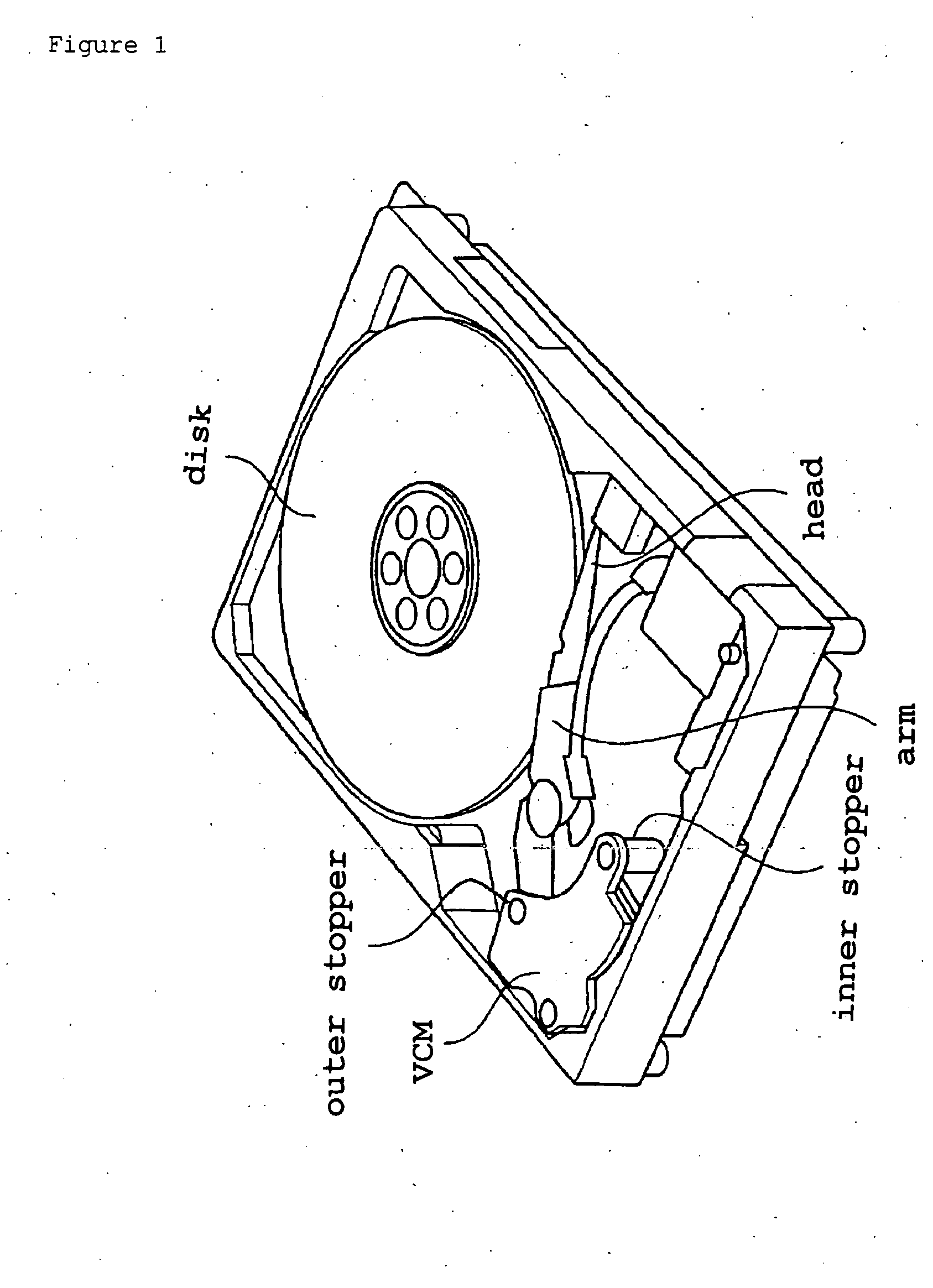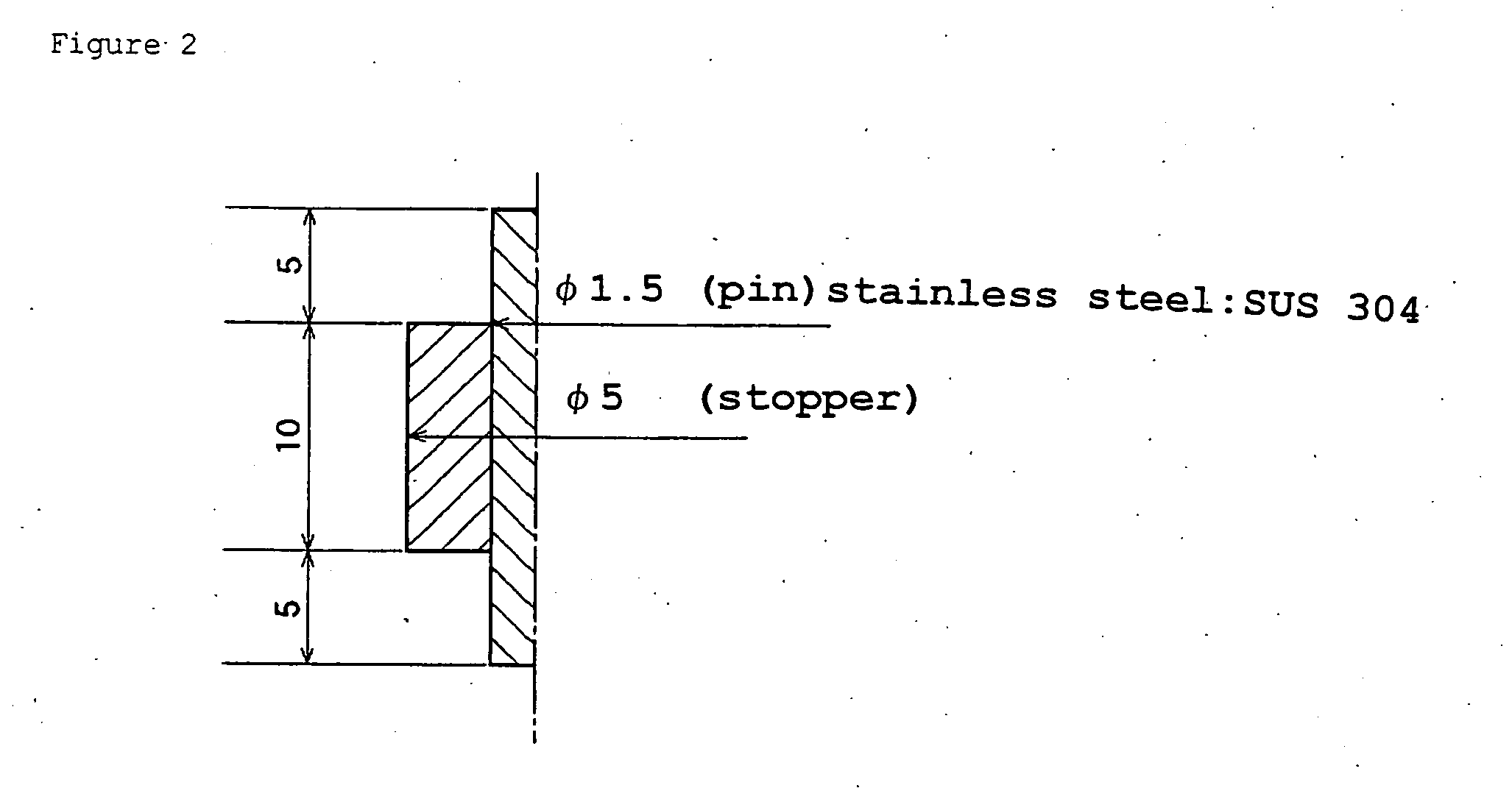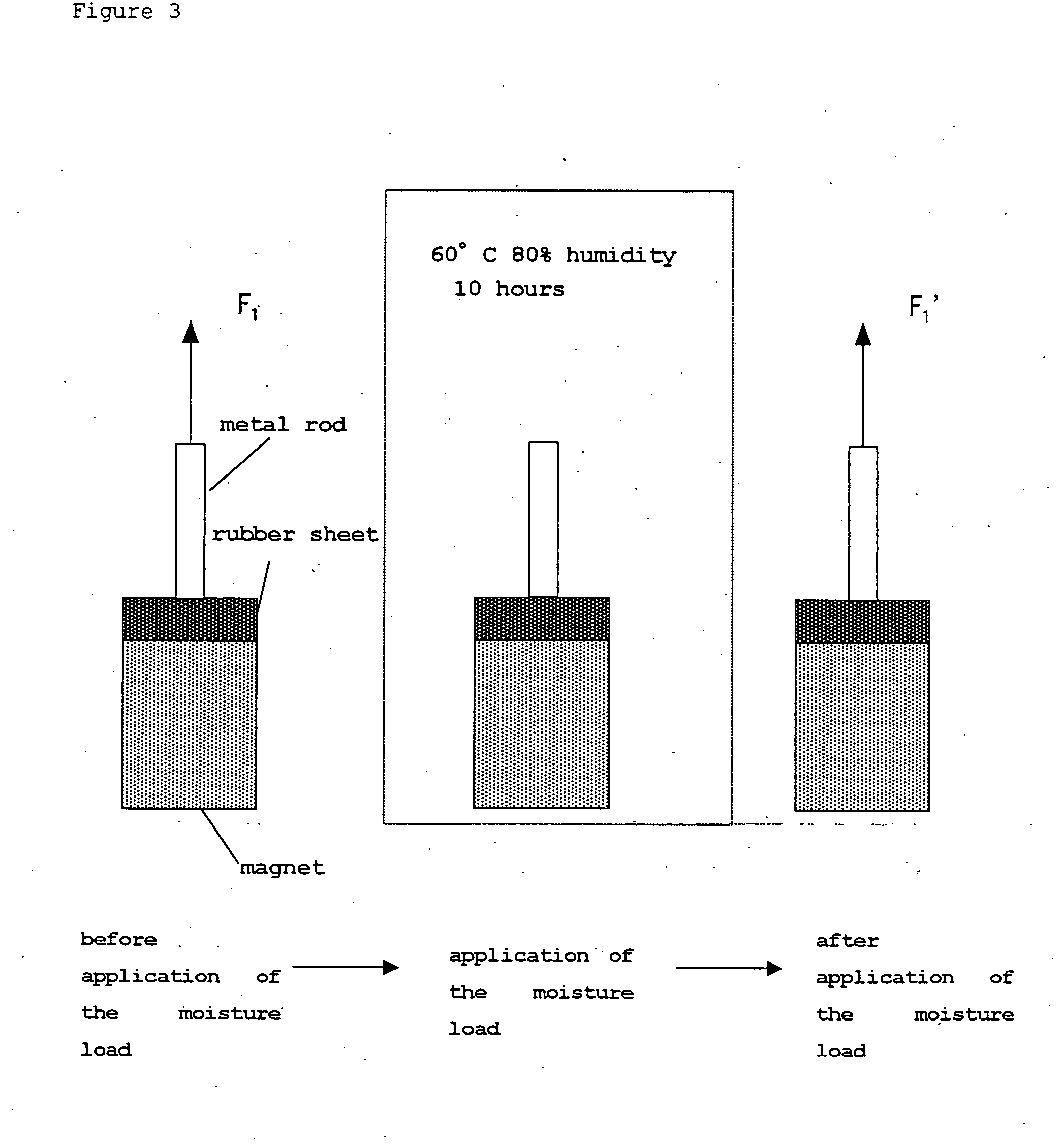Method for producing low friction fluorine rubber crosslinked body
- Summary
- Abstract
- Description
- Claims
- Application Information
AI Technical Summary
Benefits of technology
Problems solved by technology
Method used
Image
Examples
example 1
(Composition of Ingredients of Polyol-crosslinkable Fluororubber Composition)
[0133] Fluororubber (Viton A-500 manufactured by DuPont Dow Elastomers, Mooney viscosity ML1+10 (121° C.): 45) . . . 100 parts by weight
[0134] FEF carbon black (SEAST GSO manufactured by TOKAI CARBON CO., LTD., average particle diameter: 43 mμ, specific surface area: 42 m2 / g) . . . 2 parts by weight
[0135] Magnesium oxide (Kyowa Mag 150 manufactured by Kyowa Chemical Industry Co., Ltd.) . . . 3 parts by weight
[0136] Calcium hydroxide (CALDIC 2000 manufactured by Ohmi Chemical Industry, Ltd., specific surface area: 17 m2 / g) . . . 3 parts by weight
[0137] Bisphenol AF (manufactured by Riedel Dehaen) . . . 2.3 parts by weight
[0138] Triphenylbenzylphosphonium chloride (reagent manufactured by Kanto Kagaku) . . . 2.3 parts by weight
[0139] Carnauba wax (VPA No. 2 manufactured by DuPont Dow Elastomers, melting point: 80° C.) . . . 1 part by weight
[0140] The above ingredients were kneaded using a kneader and...
example 2
[0143] A heat-treated product was obtained and tested for properties in the same manner as in Example 1, except that the composition of ingredients of polyol-crosslinkable fluororubber composition was changed as follows (namely, the composition was the same as in Example 1 except that the amount of triphenylbenzylphosphonium chloride was altered to 9.2 parts by weight).
[0144] The results are shown in Table 1.
(Composition of Ingredients of Polyol-crosslinkable Fluororubber Composition)
[0145] Fluororubber (Viton A-500 manufactured by DuPont Dow Elastomers, Mooney viscosity ML1+10 (121° C.): 45) . . . 100 parts by weight
[0146] FEF carbon black (SEAST GSO manufactured by TOKAI CARBON CO., LTD., average particle diameter: 43 mg, specific surface area: 42 m2 / g) . . . 2 parts by weight
[0147] Magnesium oxide (Kyowa Mag 150 manufactured by Kyowa Chemical Industry Co., Ltd.) . . . 3 parts by weight
[0148] Calcium hydroxide (CALDIC 2000 manufactured by Ohmi Chemical Industry, Ltd., speci...
example 3
[0152] A heat-treated product was obtained and tested for properties in the same manner as in Example 1, except that PTFE was added in an amount of 40 parts by weight (phr).
[0153] The results are shown in Table 1.
PUM
| Property | Measurement | Unit |
|---|---|---|
| Temperature | aaaaa | aaaaa |
| Temperature | aaaaa | aaaaa |
| Temperature | aaaaa | aaaaa |
Abstract
Description
Claims
Application Information
 Login to View More
Login to View More - R&D
- Intellectual Property
- Life Sciences
- Materials
- Tech Scout
- Unparalleled Data Quality
- Higher Quality Content
- 60% Fewer Hallucinations
Browse by: Latest US Patents, China's latest patents, Technical Efficacy Thesaurus, Application Domain, Technology Topic, Popular Technical Reports.
© 2025 PatSnap. All rights reserved.Legal|Privacy policy|Modern Slavery Act Transparency Statement|Sitemap|About US| Contact US: help@patsnap.com



